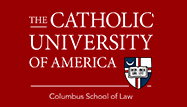Abstract
Affirmative action has been at the forefront of educational policies and to this day continues to enliven debates. For decades, schools have litigated over whether affirmative action can be used to create a diverse student body. Now, the litigation has shifted to whether affirmative action policies are narrowly tailored. The Supreme Court’s most recent affirmative action case, Fisher v. University of Texas at Austin, requires that schools prove that there are no workable race neutral alternatives in order to demonstrate that their affirmative action programs are narrowly tailored. This article examines the available race neutral alternatives: percentage plans; socioeconomic based admissions policies; elimination of legacy and development admission preferences; recruitment, retention, and financial aid programs; and community outreach. After evaluating their effectiveness, this article concludes that these programs are workable race neutral alternatives that higher education institutions must consider before they resort to using race as a factor in admissions.
Recommended Citation
Eang L. Ngov,
Following Fisher: Narrowly Tailoring Affirmative Action,
64
Cath. U. L. Rev.
1
(2015).
Available at:
https://scholarship.law.edu/lawreview/vol64/iss1/5
Included in
Civil Rights and Discrimination Commons, Constitutional Law Commons, Education Law Commons, Fourteenth Amendment Commons



